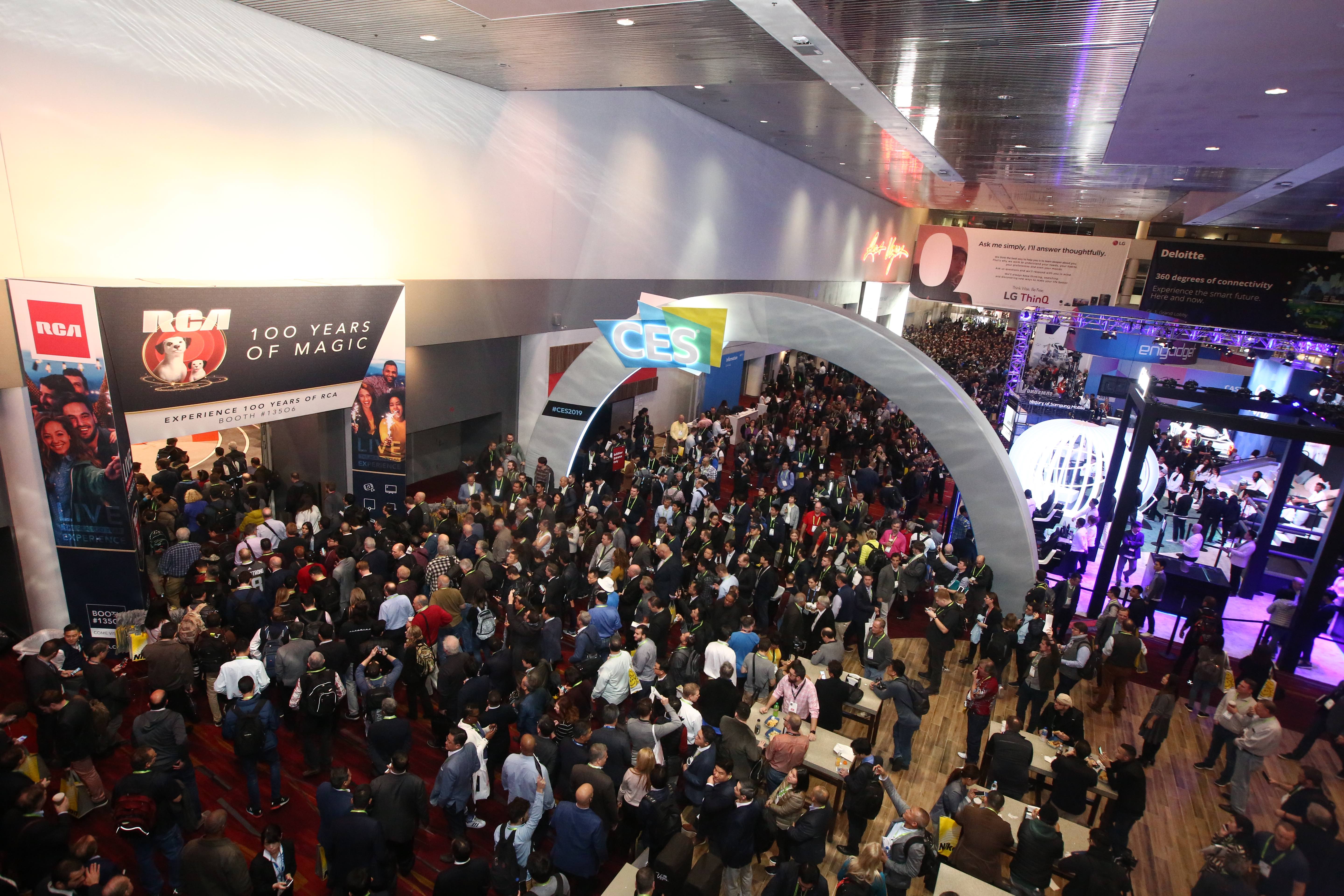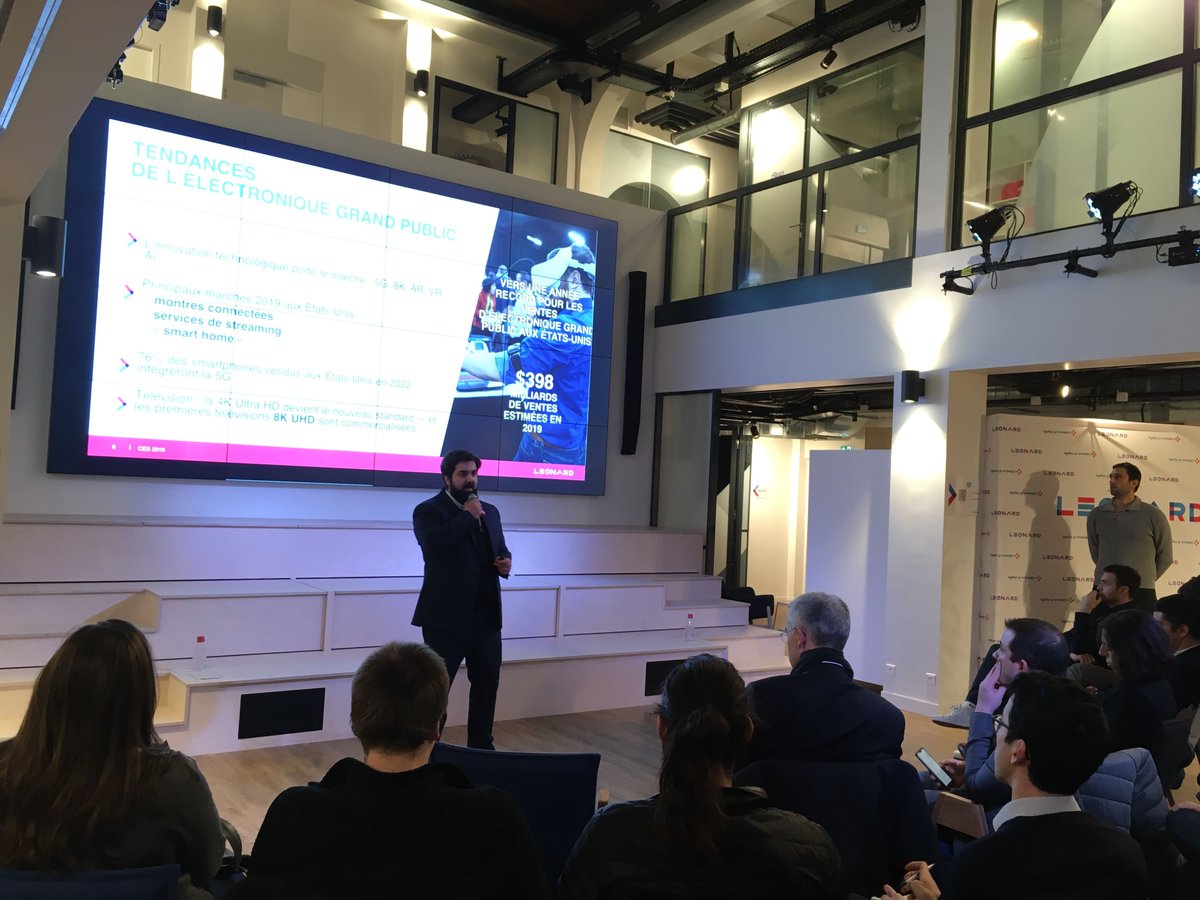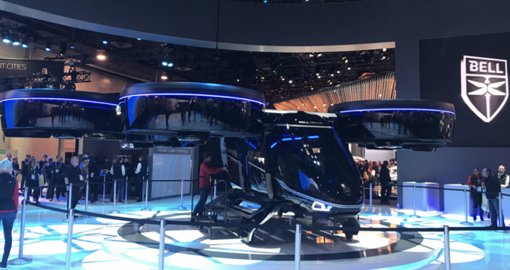
The 15 VINCI employees, Leonard staff and Hub Institute teams came back from the US with a selection of technologies that may well transform tomorrow’s cities and infrastructure.
The full presentation will soon be available online.
5G and voice interfaces in the spotlight at CES 2019
The world’s number-one technology trade show (182,000 attendees and 4,500 exhibitors, including 414 French businesses) featured three technology megatrends that are reshaping cities and worksites: 5G mobile communication, embedded AI, and voice interfaces. 5G will gradually grow into the new IoT standard, increasing speed and bandwidth while reducing lag time. Edge Computing distributes AI capabilities among objects, sidestepping Cloud platforms. This technology is poised to revolutionise the IoT and McKinsey, a consultancy, expects its market value to hover between $175 billion and $215 billion (in hardware alone) by 2025. And voice-command technology was one of the main attractions at CES this year: its applications are still elementary (playing music, checking weather forecasts and searching general information) but companies such as Legrand are embedding it in their light switches, for instance, suggesting that we will be able to voice-control just about everything in our homes one day.

Resilience, smart places and workplaces: the emerging technologies and trends
VINCI’s teams at CES also spotted four trends that augur sweeping transformation for companies that build and operate cities and infrastructure.
Resilience was one of the terms that came up often at the trade show – in relation to setting up emergency communication networks, producing drinking water and monitoring air quality. The $155 billion lost to natural disasters in 2018 is prompting communities and businesses to react and adapt. Smart cities were among the highlights at CES 2018, but the focus shifted to smart buildings in 2019, to a large extent because of the wave of voice interfaces and platforms that will combine into connected-home hubs. CES is also taking a growing interest in the business world. Sensors and drones are at the core of the whole Industry 4.0 drive and virtual reality is promising professionals that they will experience ubiquity one day.
CES is also a motor show
Mobility was another focal point in Las Vegas: CES is also the world’s leading automotive technology show and had two full halls to showcase developments in this sector, including an array of new kinds of urban vehicles ranging from relatively realistic to unequivocally futuristic. One of them, Uber Elevate, is a large flying vehicle that Uber developed in partnership with Bell.

Carmakers also staged their novel autonomous driving technology. Kia, for example, presented its READ (Real-Time Emotion Adaptive Driving) system, which analyses the driver’s heartbeat, facial expressions and electrodermal activity to optimise his or her driving experience. Several other stands had more to do with the passenger experience and for example provided visitors with glimpses of the entertainment that passengers will enjoy when they no longer have to keep their eyes on the road. Hyundai presented cabins brimming with possibilities for its future autonomous vehicles – including productivity software to work on the road, gaming consoles and sports programmes to keep passengers busy, amused and fit. After all, riding in a car doesn’t have to mean sitting around doing nothing.
So the trailblazing technologies and breakthroughs at CES herald more automated and convenient daily lives and working lives. The question, however, is whether these prototypes will become viable, marketable solutions. And the answer may be at the next CES!


